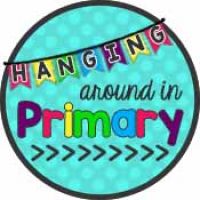
How to Get Started with Flexible Seating
How do you start flexible seating without spending a fortune? Are you considering starting flexible seating but don't have the budget to buy pillows, scoop rockers etc? You can start flexible seating in your classroom right away without a lot of money invested. I am going to share with you how to do that!
First off, before you decide to try something like flexible seating, which seems to be one of the newest trends (fads) in education you need to ask yourself 2 questions:
1. Is this something I would like to try because I think it is best for my students?
2. Is this something I think I should try because it is the next big thing and I should do it too?
I did start flexible seating this past year in my classroom and I'm happy to say that I'm really pleased with the outcome. I do need to preface this by saying I did not go to Walmart and buy scoop rockers or order yoga balls or wobble seats. I didn't go out and spend money on new furniture for my classroom.
I was able to start flexible seating in my classroom with what I had (and what you most likely have, too) and a few small purchases.
The first thing I did was determine where my kids were going to work. When I think of flexible seating I'm thinking about different seating possibilities within the classroom and not necessarily different kinds of seating.
As a class, we talked about different places we could work in the classroom aside from our own desks. My students came up with places like working on the carpet, working under their tables, standing up at their tables, laying on the floor, and using the clipboards to work any place in the classroom.
I have no plans to give up our desks/tables - I consider that our "home base" where everything is stored and has a home. Many of my kids prefer a desk and chair and I have a large room so I can easily accommodate my desks and other options.
The next step was to create an anchor chart that we could refer to when starting out using different work spaces. This is the most important step in the whole process. You need to establish very concrete expectations about what it looks like to work in different places in the classroom. If your first graders are anything like mine they will pick spots based on where their friends are sitting.
Well, let me tell you the anchor chart works! We call our spots our "Smart Spots". Students know what the expectations are and know that they will lose their smart spot if they are not making good choices. The first thing I noticed about using smart spots was that my students were staying on task a lot longer than before. I believe this is due to the power of choice. Let them pick where to work and they will stay engaged longer.
These are the things I started out with. I also had stools from somewhere - the ones you have most likely seen in pics of other classrooms - but they were super wobbly and broke so I will not be getting any more. I do plan on buying a few yoga mats and cutting them up to use as well.
Flexible seating to me is more about the options you give your students rather than the furniture you provide. My students were happiest when they could lay on the carpet or sit on the bench by the coat hooks with a clipboard.
What are your thoughts on flexible seating? Love it? Haven't tried it? I would love to hear from you. Leave me a comment below with your thoughts.
Until next time,
More posts from Christina Hermer



